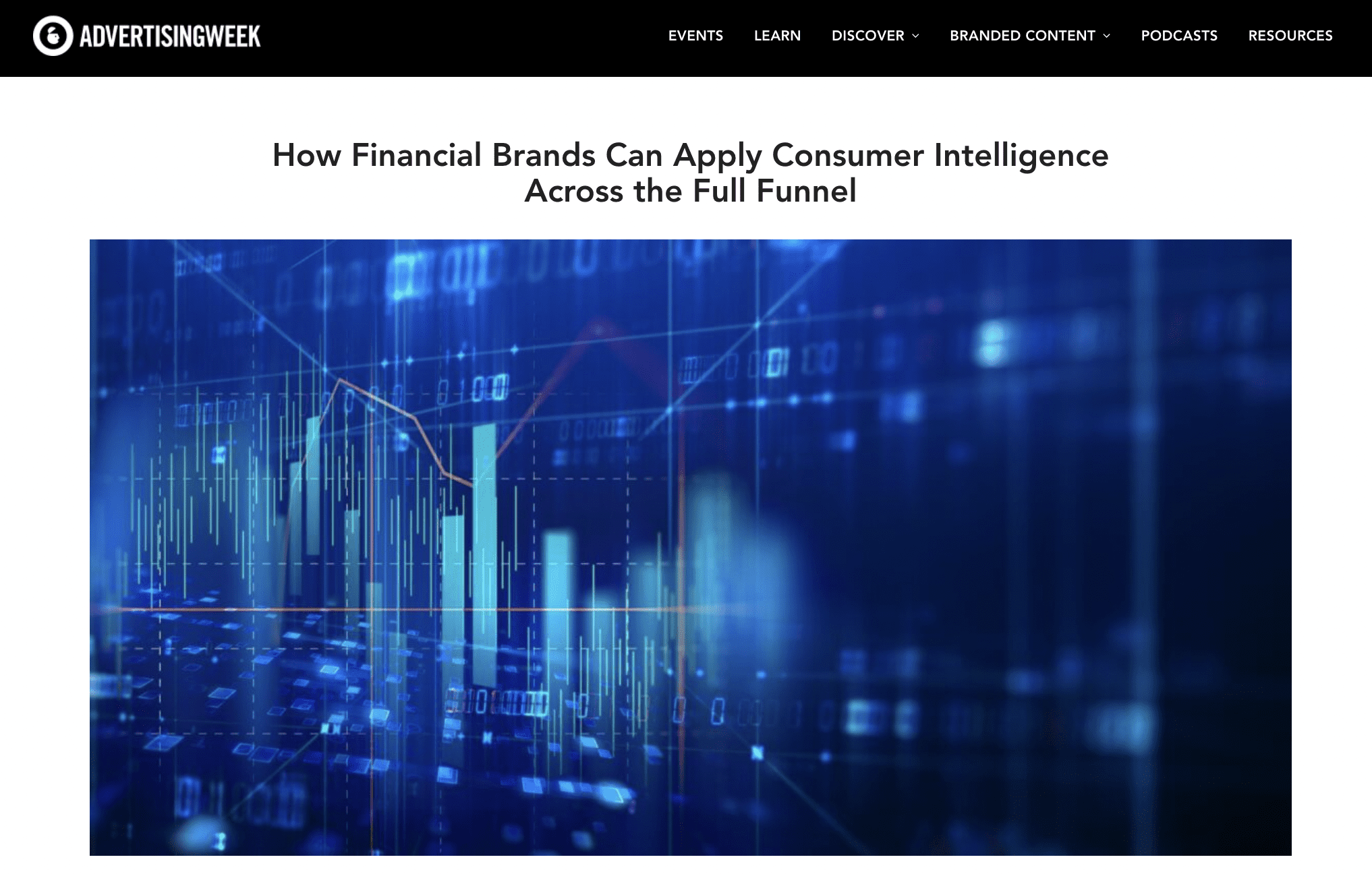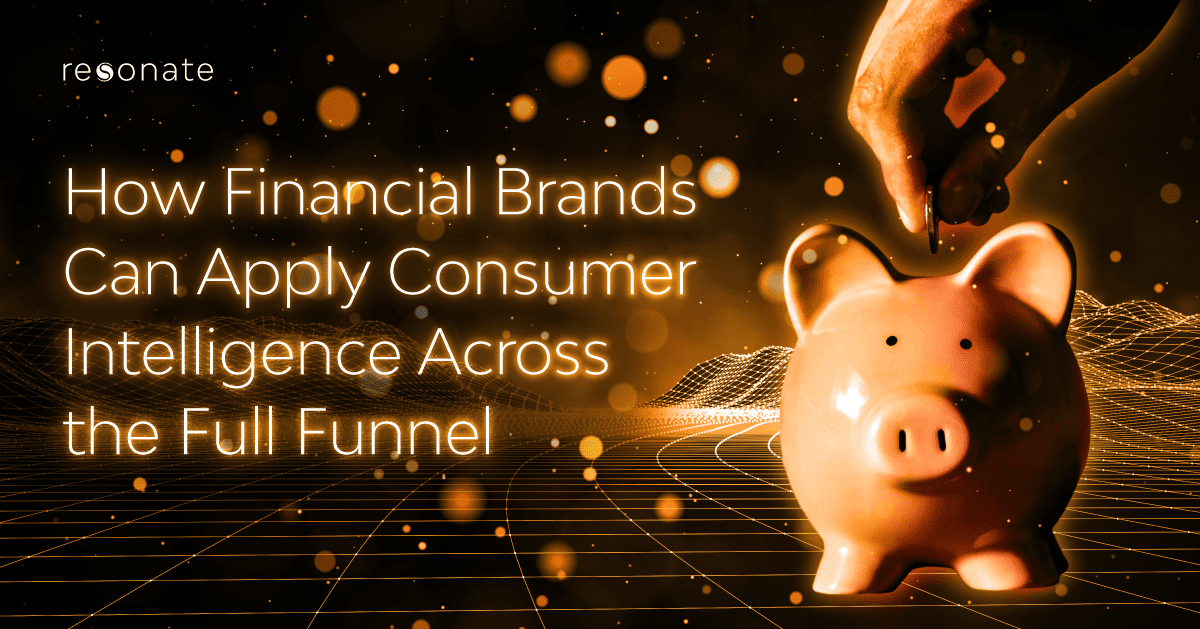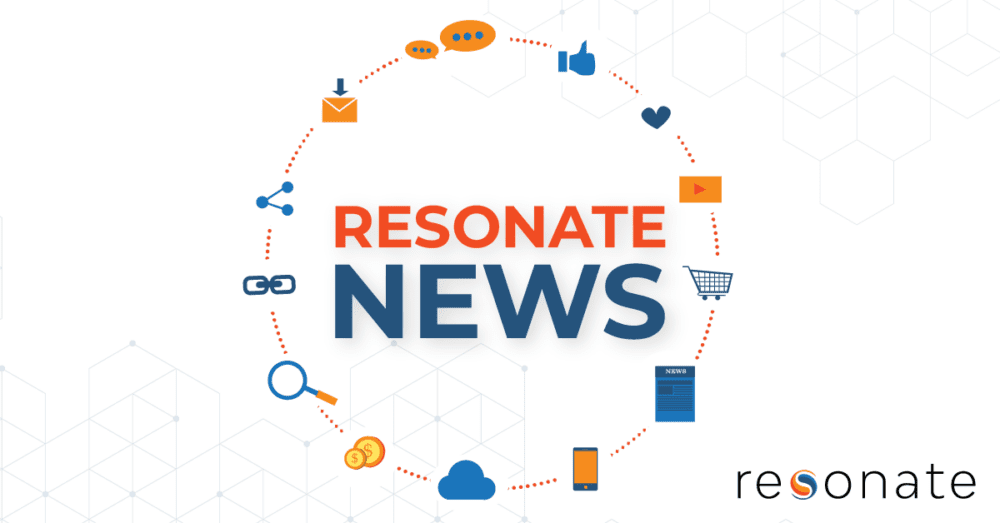The article by Shiva Sharif below appeared in AdvertisingWeek. Read it in its entirety here.
The upheaval of the past two years has touched every aspect of consumer lives, including their finances and how they think about money management. Particularly as the competitive landscape of online direct-to-consumer banking and investment players becomes more crowded, it’s never been more important for financial marketers to forge deep connections with their customers than it is today.
Today’s consumers are more willing to switch their banking and investment providers than ever before, making customer retention a key component of the financial marketer’s playbook.
But it goes deeper than that. These days, if you’re not up-leveling your first-party data with consumer insights to unlock deeper connections at every stage of the buyer and customer journey, you can bet that your competitors are.
Let’s take a look at how third-party intelligence can help financial brands identify, understand, reach and resonate with consumers at every stage of the buyer and customer journey.
Upper Funnel Marketing: Awareness and Consideration
For financial brands, identifying prospects and ensuring a robust pipeline of new customers has never been more important. By onboarding a company’s first-party data set to a consumer intelligence platform—for example, a data set identifying recent visitors to your website—you can deepen your understanding of known customers and prospects and unlock insights on unknown prospects engaging with your digital touchpoints, such as visitors to your website.
For example, a financial brand might want to identify, understand and target above-average-income millennials who are looking to switch banks but who lack awareness, familiarity and understanding of the brand itself. Using the right consumer intelligence, financial marketers can create unique personas using a combination of brand metrics, psychographics, investment interests and bank satisfaction scores.
In addition to identifying the best audiences for upper-funnel marketing, the right data and insights can help a financial brand develop advertising that emotionally connects with high-value prospects.
For example, using data around prospects’ personal values—e.g., attributes that measure peoples’ openness to change and desire for self-enhancement, self-transcendence and conservation—a financial brand can create more engaging and meaningful display, video, native and email campaigns. Once high-value audience segments are identified and advertising personalized, financial marketers can put those profiles to use, at scale, on programmatic and social media platforms.

Mid and Lower Funnel Marketing: Conversation and Acquisition
After building awareness and consideration, financial marketers can look to identify and engage people who have decided it’s time to shop for new financial services. For example, based on insights from our Resonate Ignite platform, we know there are more than 9 million Americans looking to switch banks in the next 12 months.
Financial marketers can layer additional insights on top of those known bank switchers to gain a deep understanding of the values, aspirations, frustrations and decision drivers of would-be new customers. For example, here are the top reasons people will switch banks:
- Convenient ATMs locations
- ATM fees
- Breadth of mobile banking services
- Interest rates on deposits
- Bonus for direct deposit or opening a new account
Customer Lifetime Value Marketing: Retention, Expansion and Advocacy
In the financial world, customer acquisition is just the beginning. The brands that succeed in today’s tumultuous landscape will be the ones that commit to staying in continual touch with their customers, adapting their products, offers and messaging alongside the needs, wants and worries of their existing clients.
To increase customer lifetime value (CLV) and retain high-value customers, financial brands can connect their CRM data to third-party consumer insights to reduce churn and accelerate cross- and up-sell opportunities.
Greater CLV can be achieved by personalizing content on a company’s website and offering new products and services aligned with the customers’ needs and values. Brand advocacy can be developed through corporate social responsibility initiatives, as well as providing content and messaging that aligns with the values and personality traits of top customer segments.
Keeping up with disruption, digital transformation and consumer anxiety will challenge even the most seasoned financial services professionals—and we don’t know what this year will bring. But, with a firm focus on acquisition, expansion and retention, and armed with fresh human-level data, you’re set up for financial marketing success in 2022.

